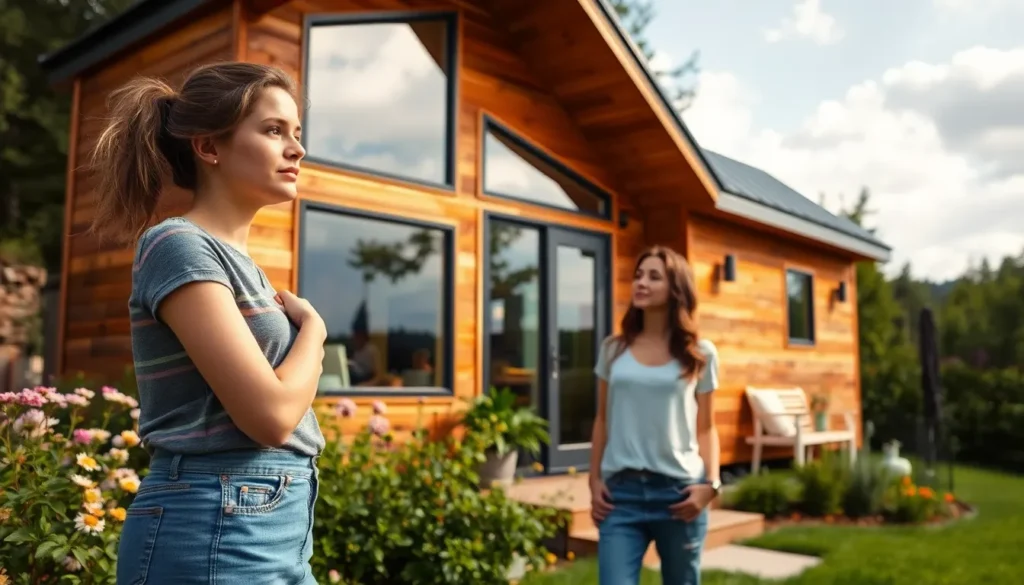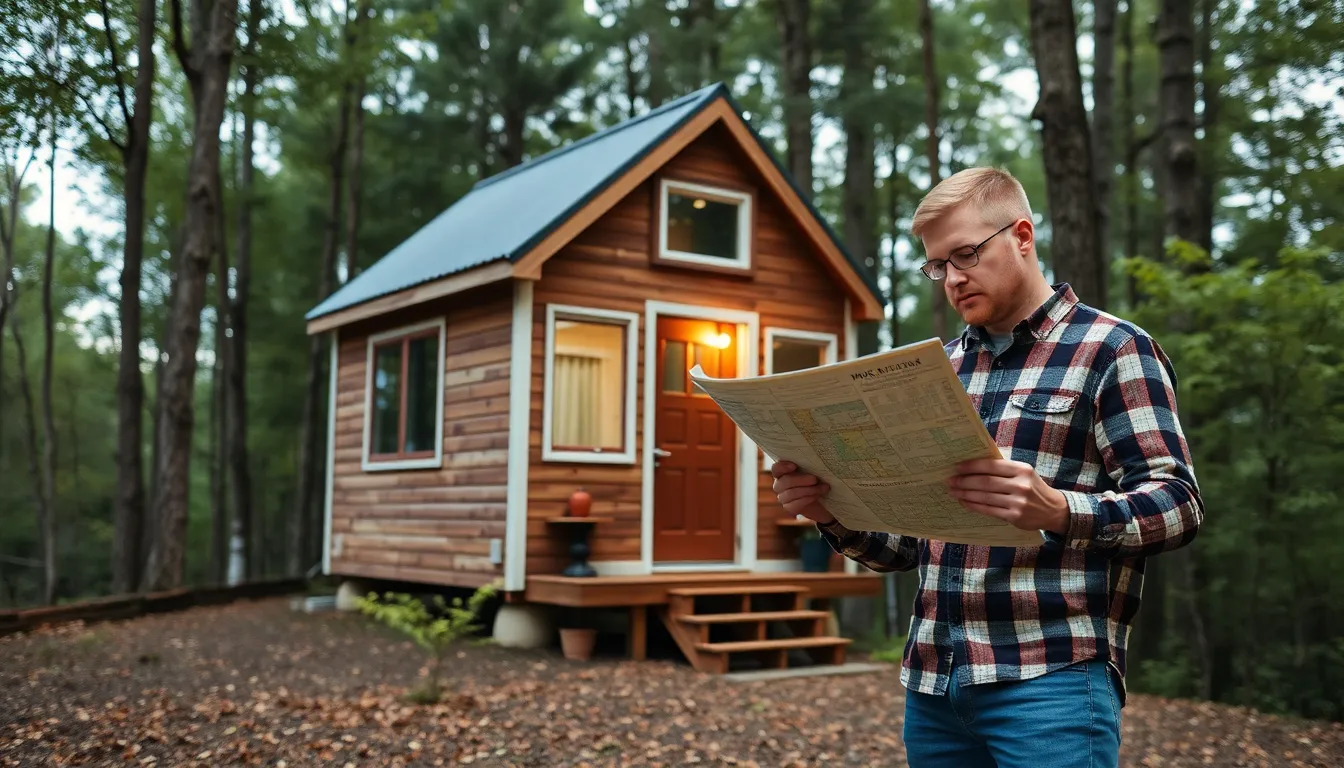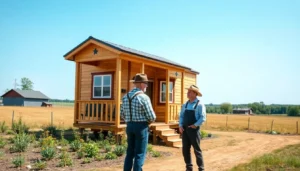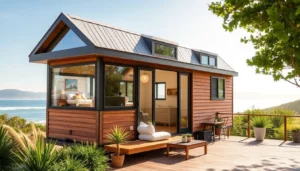Table of Contents
ToggleIn a world where bigger often seems better, the tiny house movement flips that notion on its head. Imagine living in a cozy, minimalist space that sparks joy while saving you a chunk of change. But before you grab your hammer and start building your dream abode, there’s a tiny detail lurking in the shadows: legal considerations.
Navigating the legal landscape of tiny homes can feel like trying to find a parking spot in a crowded city—frustrating and filled with unexpected twists. Zoning laws, building codes, and permits can turn your tiny dream into a legal nightmare if you’re not careful. So, whether you’re ready to downsize or just curious about the tiny house trend, understanding these legalities is crucial. Let’s dive into the essentials that’ll keep your tiny home dreams on the right side of the law.
Overview of Tiny Houses
Tiny houses represent a growing trend in housing aimed at simplicity and affordability. People often choose these homes to minimize their environmental footprint while enjoying a flexible lifestyle. These structures typically range in size from 100 to 400 square feet, making them easily transportable and adaptable to various settings.
Zoning laws significantly influence tiny house living. Different regions may have specific restrictions regarding where tiny homes can be situated. Local jurisdictions often define minimum square footage requirements, which can limit placement options. Additionally, some areas allow tiny houses in designated communities, while others classify them as RVs or camping units.
Building codes also play a vital role in tiny house construction. They dictate standards related to safety, materials, and sanitation. Compliance with these regulations ensures safety and durability in a living space. Homeowners frequently need permits to build or park tiny houses, depending on local authorities.
Many tiny house owners explore different land ownership options. Purchasing land in rural areas usually offers fewer restrictions than urban subdivisions. Some choose to rent lots in tiny home communities, fostering a sense of community and shared resources.
Financing tiny homes poses unique challenges. Traditional mortgages may not apply due to their small size, prompting many buyers to seek alternative loan options. Personal loans, RV loans, or informative crowdfunding campaigns often provide viable solutions.
Understanding these legal considerations is essential for anyone pursuing a tiny house lifestyle. Awareness of zoning requirements, building codes, land ownership options, and financing methods helps ensure compliance and avoid potential pitfalls.
Zoning Regulations
Zoning regulations play a crucial role in determining where tiny homes can be established. These regulations vary significantly from one locality to another, impacting placement, size, and even design of tiny houses.
Understanding Local Zoning Laws
Local zoning laws dictate the types of structures permitted in specific areas. These laws define residential zones, commercial zones, and agricultural zones, each with unique requirements. In urban areas, for instance, higher density housing may be encouraged, while rural regions often allow for more flexibility. Minimum lot sizes and dwelling dimensions often come into play. Some localities might require a minimum square footage of 400 square feet or more for a structure to qualify as a residence. Understanding these laws is essential for prospective tiny house owners to avoid fines or removal orders.
Navigating Zoning Variances
Securing a zoning variance can provide a pathway to circumvent restrictive zoning laws. A variance allows an individual to deviate from established zoning regulations under specific circumstances. Local zoning boards typically review these requests, considering factors like safety, community impact, and existing land use. It’s important to present a compelling case when applying, addressing how the tiny house aligns with community goals. Successful applications can enable tiny house owners to place their homes on smaller lots or in non-traditional zones, expanding the options for where they can live comfortably and legally.
Building Codes
Building codes play a significant role in tiny house construction, ensuring safety and compliance within communities. Understanding state and local regulations is crucial for anyone planning to build or park a tiny home.
Compliance with State and Local Building Codes
Compliance with state and local building codes ensures safety and structural integrity. Local authorities set specific regulations that tiny house builders must follow. These regulations can vary widely, reflecting the needs of the community and environmental considerations. Many areas require permits before construction begins, and non-compliance may result in fines or the need to dismantle the structure. Identifying the appropriate codes before starting any project streamlines the building process and helps avoid legal complications.
Tiny House Specifications and Standards
Tiny house specifications are governed by several standards that cover various aspects, including dimensions, materials, and safety features. Most jurisdictions require tiny homes to adhere to specific minimum square footage requirements. In general, a tiny house may not fall below 100 square feet. Furthermore, some states mandate that tiny houses comply with the International Residential Code or ANSI standards. Ensuring compliance fosters a safer living environment and can aid in securing financing or insurance for the tiny home. Understanding these specifications allows builders to create homes that not only meet legal requirements but also serve the residents’ needs effectively.
Permitting Process
The permitting process involves several steps essential for tiny house construction. Understanding the types of permits required can prevent costly delays.
Types of Permits Required
Tiny house owners may need various permits depending on local regulations. Building permits ensure that construction meets safety and zoning standards. Electrical and plumbing permits often apply when installing utilities. Additionally, occupancy permits validate that the home is safe for habitation. Some municipalities might require specific land use permits if the tiny house is on a permanent foundation. Other areas may necessitate permits for temporary structures if the house is mobile.
Tips for a Successful Permit Application
Preparing a successful permit application involves careful attention to detail. First, gathering all necessary documentation can streamline the process. This documentation typically includes site plans, design specifications, and any required inspections. Communicating with local officials about requirements is crucial. They can provide insights on what to include and how to avoid common pitfalls. Submitting applications early allows time for any revisions. Lastly, keeping a record of all communications and submissions helps maintain clarity throughout the application process.
Land Ownership and Lease Agreements
Understanding land ownership and lease agreements is essential for tiny house owners. The choice between buying or leasing can significantly impact one’s tiny house journey.
Buying vs. Leasing Land for Tiny Houses
Purchasing land offers full ownership rights for tiny house owners. This option allows for greater control over property use and potential property value appreciation. Leasing land often involves lower upfront costs and can provide flexibility for those unsure about long-term commitments. Lease agreements typically include terms that define the relationship between the landowner and tenant, making it crucial to review specific conditions. Property preferences may favor one option over the other, depending on individual goals and financial situations.
Key Provisions in Lease Agreements
Lease agreements should clearly outline essential terms, including duration and payment structure. Tenants must understand renewal options and any restrictions on building or modifications. Utilities access, maintenance responsibilities, and property use limitations are also critical components. Ensuring clear communication between the landlord and tenant can completely prevent potential disputes. Reading through the entire agreement before signing provides clarity and protects both parties. Tiny house owners must prioritize compliance with all terms to foster a harmonious relationship with landowners.
Conclusion
Understanding the legal landscape surrounding tiny houses is essential for anyone interested in this lifestyle. By familiarizing themselves with zoning laws building codes and permitting processes tiny house enthusiasts can avoid potential pitfalls. It’s crucial to research local regulations and seek guidance when needed to ensure compliance.
Navigating issues like land ownership and financing can also play a significant role in the success of a tiny house project. With careful planning and attention to detail individuals can turn their tiny house dreams into reality while enjoying the benefits of minimalist living. Embracing this journey with knowledge and preparation sets the foundation for a fulfilling tiny house experience.








